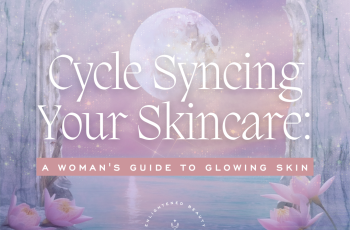
Can You Use Vitamin C and Copper Peptides Together?
Copper Peptides and vitamin C are two ingredients that benefit the skin effectively when teamed together, or one their own. Out of the two you may know a little more about vitamin C and the effects it can give to the complexion.
Packed with antioxidants vitamin C can combat signs of damage caused to the skin from exposure to UV rays, pollution, and other environmental aggressors. You’ll find that vitamin C is able to help target uneven skin tone by fading the pigmentation of dark spots and other areas of hyperpigmentation.
As for copper peptides, these naturally occurring chains of amino acids can help boost the production of collagen and elastin in the skin. With this you will find fine lines, wrinkles, enlarged pores and sagging skin are significantly reduced and improved.
Now both ingredients sound highly effective, I wouldn’t blame you wanting to team these skincare powerhouses together. But the question is, can you use vitamin C and copper peptides together? Let’s investigate this out together and hopefully after today’s blog you’ll have a better understanding of using these in your skincare routine.
Can you use peptides and vitamin C together?
Yes, you can, but vitamin C can alter how effectiveness of copper peptides. When applying your skincare products, it is best to leave about 10-15 minutes in between applications to avoid unwanted irritation, redness, and general discomfort for the skin.
Each of these ingredients are able to deliver highly impressive skin results single handily. But used together correctly can leave your skin protected from nasty free radical exposure which can lead to all manner of skin damage thanks to vitamin C. Whilst peptides are busy boosting collagen in the lower layers of the skin keeps the complexion in its healthiest state. In other words, you’ll find that whatever new cells peptides instruct the skin to produce, they’ll be protected by vitamin C.
If you are sat there wondering about whether there are some ingredients that are best avoided, check out our blog post about what you can’t you use with peptides and vitamin C.
Can you combine vitamin C and copper?
You can, but with caution. This is mainly because when copper and vitamin C when layered together can sometimes cancel each other’s effects on the skin. You’ll find with different strengths of potency of copper will result in ascorbic acid (also known as vitamin C) becoming oxidised. With this oxidisation you’ll find that the effects of vitamin C breaks down diminishing the effectiveness of the skin brightening powerhouse.
Having said that, it is simply a case of applying each ingredient at the optimal time ensuring they are both able to absorb into the skin without any unwanted side effects. You can either apply one product enriched with either ingredient, allowing 30 minutes in-between applications. Alternatively, you can try applying vitamin C in the morning routine, followed by peptides in your evening routine. This keeps your skin fully protected and skin barrier strengthened whilst any signs or existing damage combatted in the evening with the skin repairing benefits of copper.
What can I combine copper peptides with?
There are a few ingredients that can be combined with copper peptides, such as hyaluronic acid, amino acids and niacinamide. All of which can target the skin with added boost in hydration enabling the skin barrier is fully functioning and at its healthiest state.
The beauty of copper peptides is their ability to work well with any skincare ingredient. Even those that come with a word of caution, such as retinoids, vitamin C and AHAs, all of which should either used on alternate days and have enough time in between applications to avoid any unwanted skin irritation or reactions.
What goes first peptides or vitamin C?
When it comes to getting the most out of your skincare products, many forget the simple difference of applying your products in the correct order can have more of an impact then you think! The general rule of thumb when applying your daily routine is starting off with the thinnest and work your way up to the thickest consistency.
When it comes to figuring out which goes first, peptides or vitamin C, this is very much dependant of the formulation they are blended in to. You may find that both ingredients are found in serums, face oils, moisturisers, and face masks which are applied during the last stages of your routine.
Another point to consider is the fact that your skin changes its requirements throughout the day. It has a 24-hour circadian rhythm which ultimately leads to it needing protection from environmental factors throughout the day, such as UV rays and pollution. As for evening, it requires a helping hand with repairing and rejuvenating the skin whilst you get your beauty sleep.
Are copper peptides better than vitamin C?
This very much depends on how copper peptides and vitamin C work on the skin, your skincare routine and down to your own personal preference. Both ingredients can improve the skin’s firmness and smoothness with a helpful amount of antioxidants combating any free radical damage. You can use each of these ingredients twice a day in your daily routine and reap the rewards but can also benefit from one application a day. It is just a simple case of trial and error and finding the best way of introducing both ingredients into your daily routine. Don’t forget that if you haven’t used either copper peptides or vitamin C enriched products before, I suggest consulting with a doctor or dermatologist to ensure you are using the best combination for your skin.
Should vitamin C be applied day or night?
This is down to personal preference as you can use vitamin C throughout the day. However, many beauty experts and skincare fans would advise using vitamin C enriched serums and moisturisers during your morning routine. This is because of how effective ascorbic acid (vitamin C) is at delivering skin brightening results to the complexion as well as its antioxidant properties keeping skin damage and environmental aggressors at bay. If you are wanting to use vitamin C in the evening, by all means you can, however, remember it is best to avoid using potent retinoids as this will result in severe dryness, irritation, and redness.
So, there you have a little more information about whether you can use vitamin C and copper peptides together. Don’t forget if you have any questions come and follow the Procoal Instagram.


